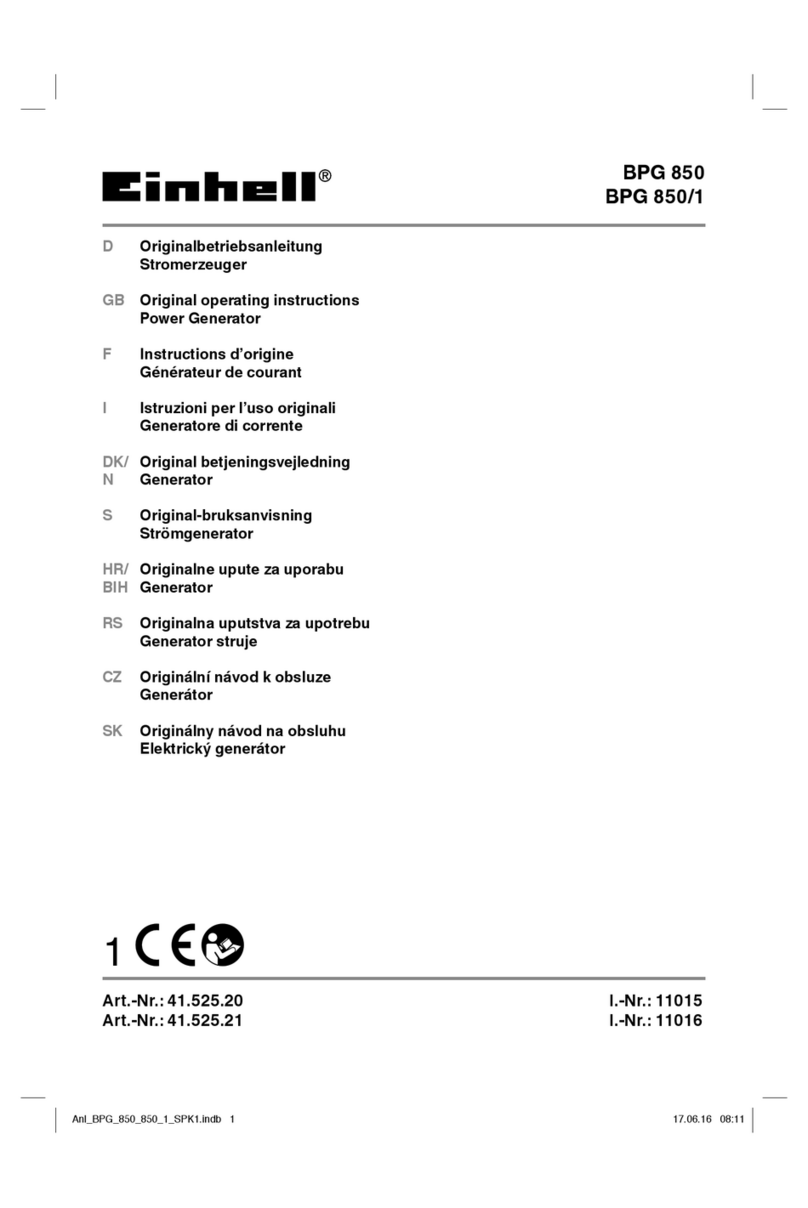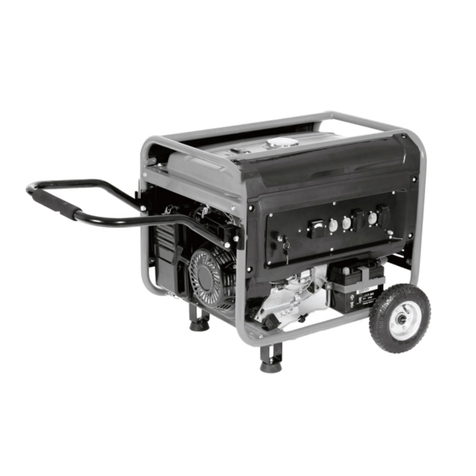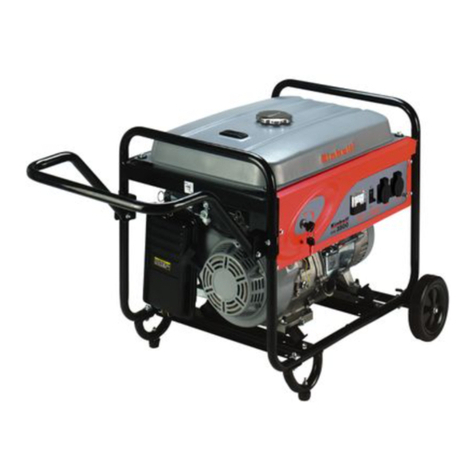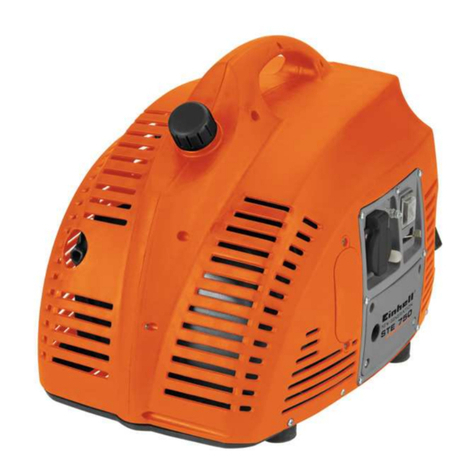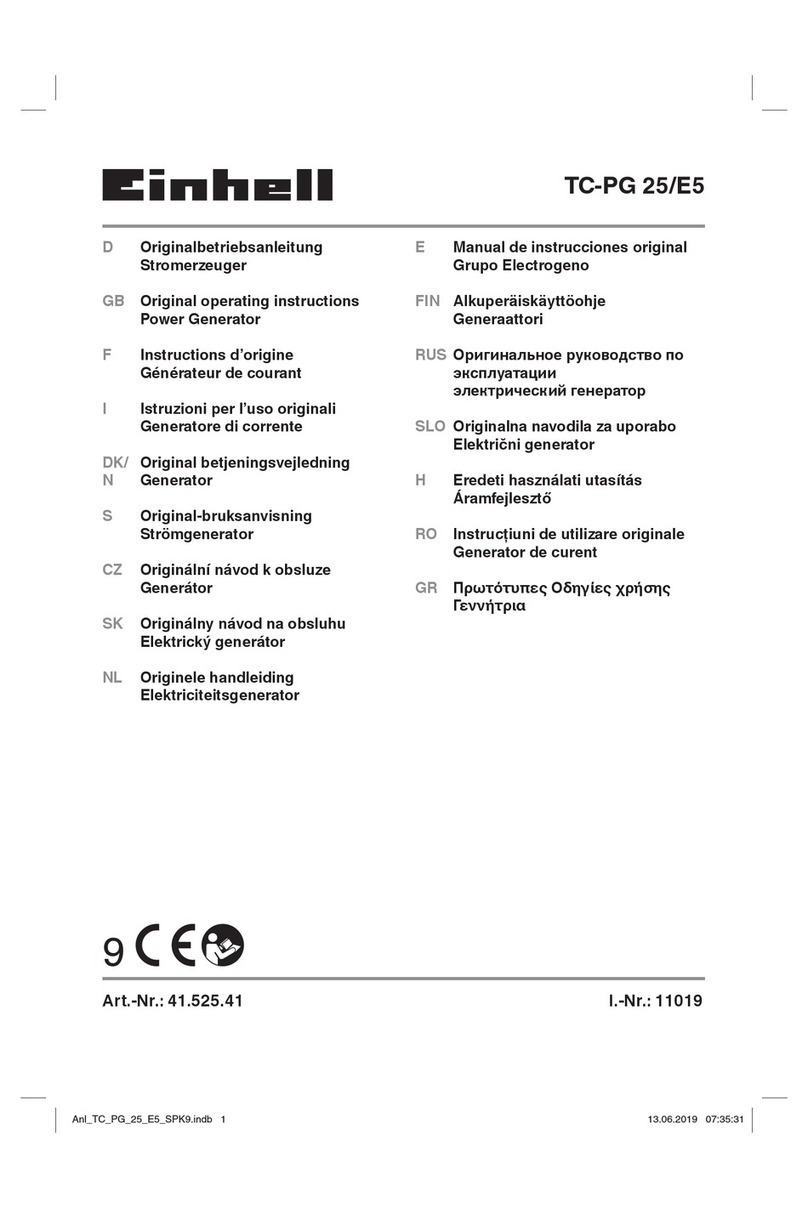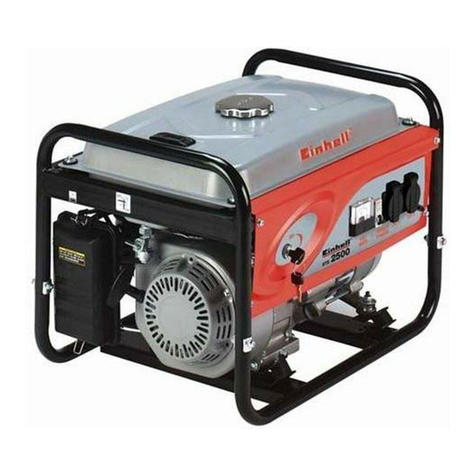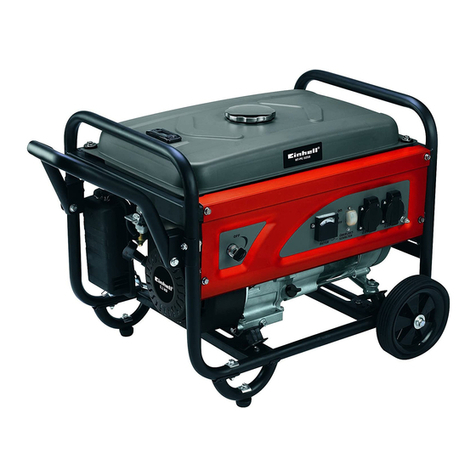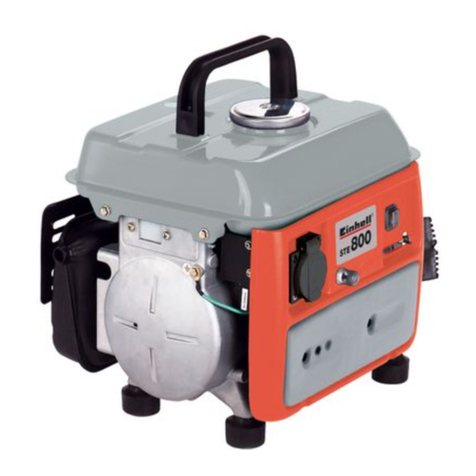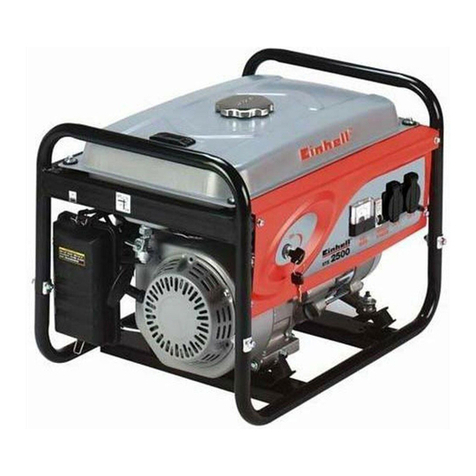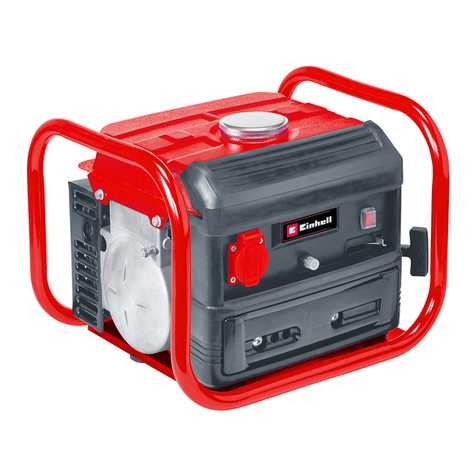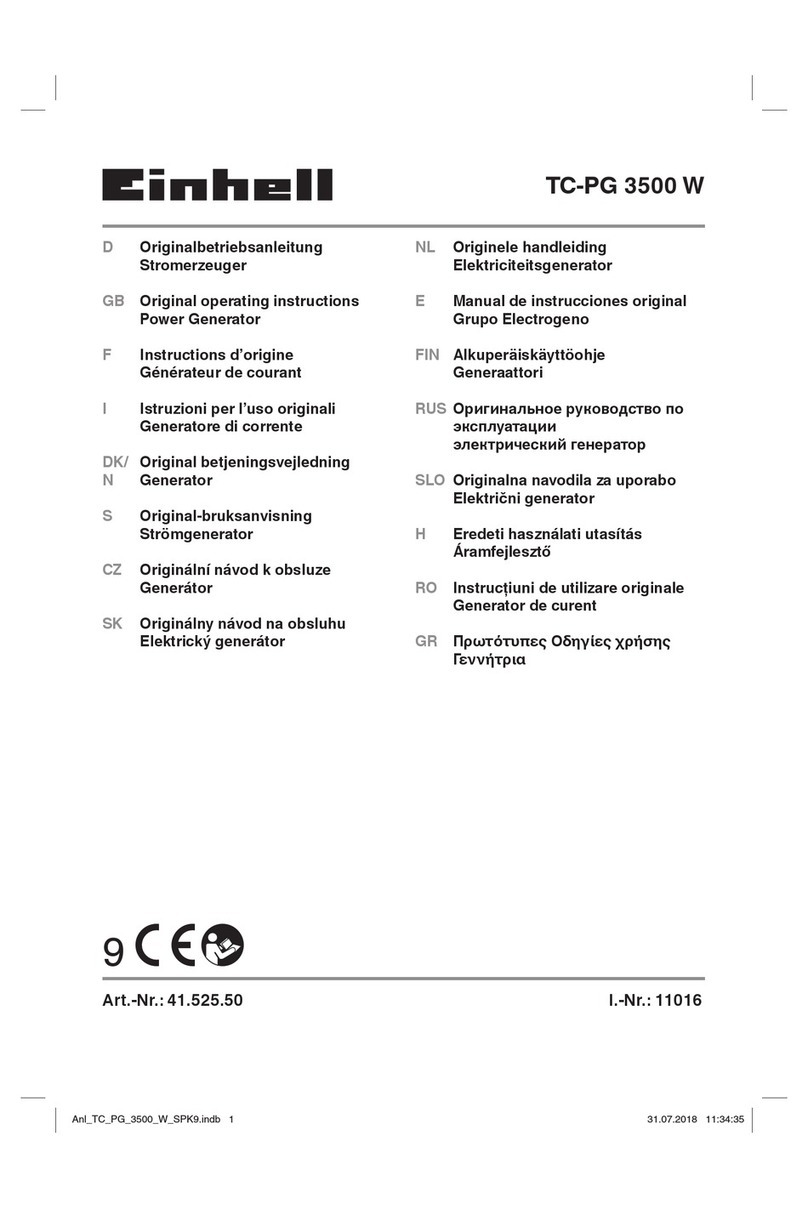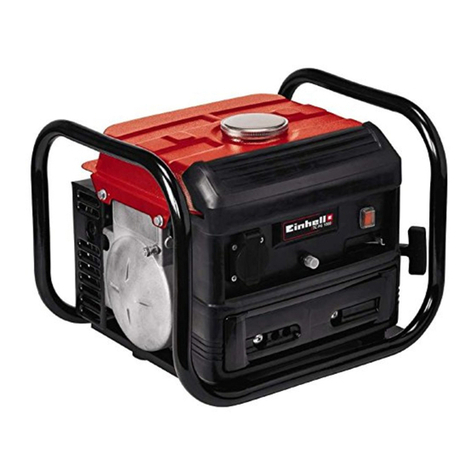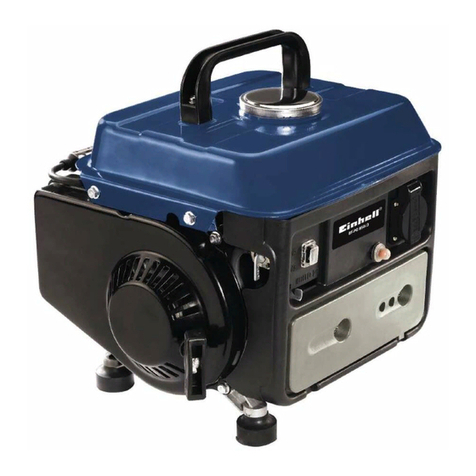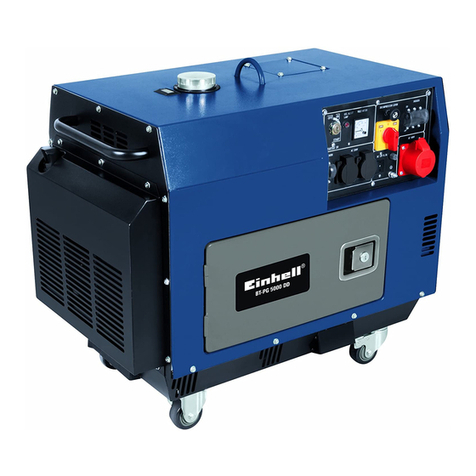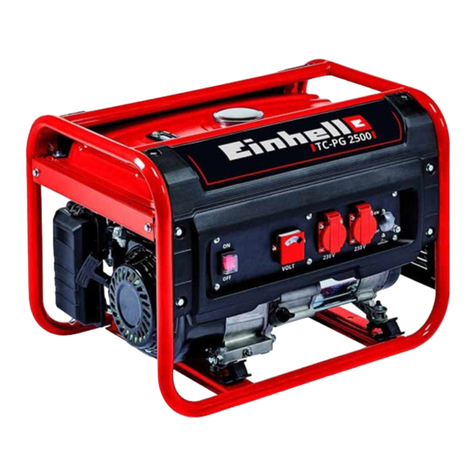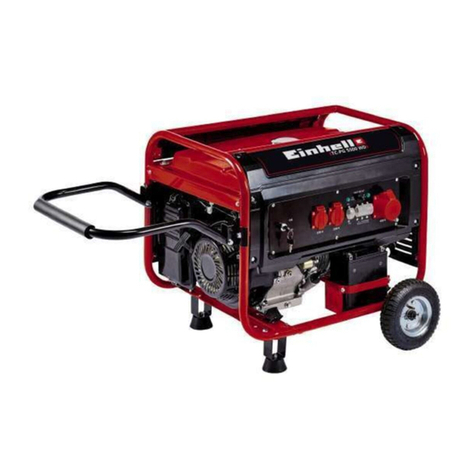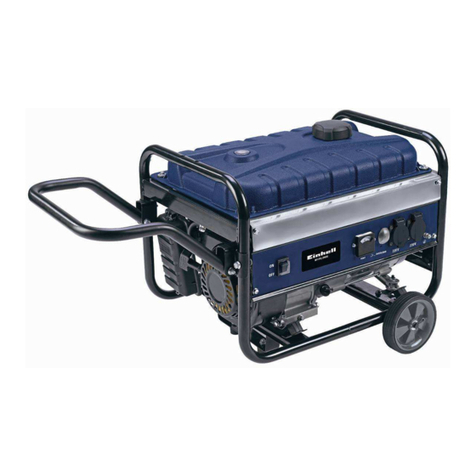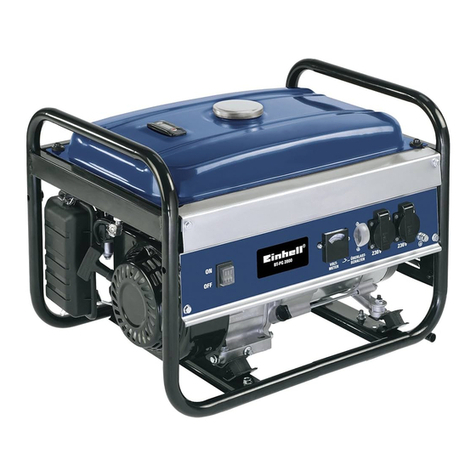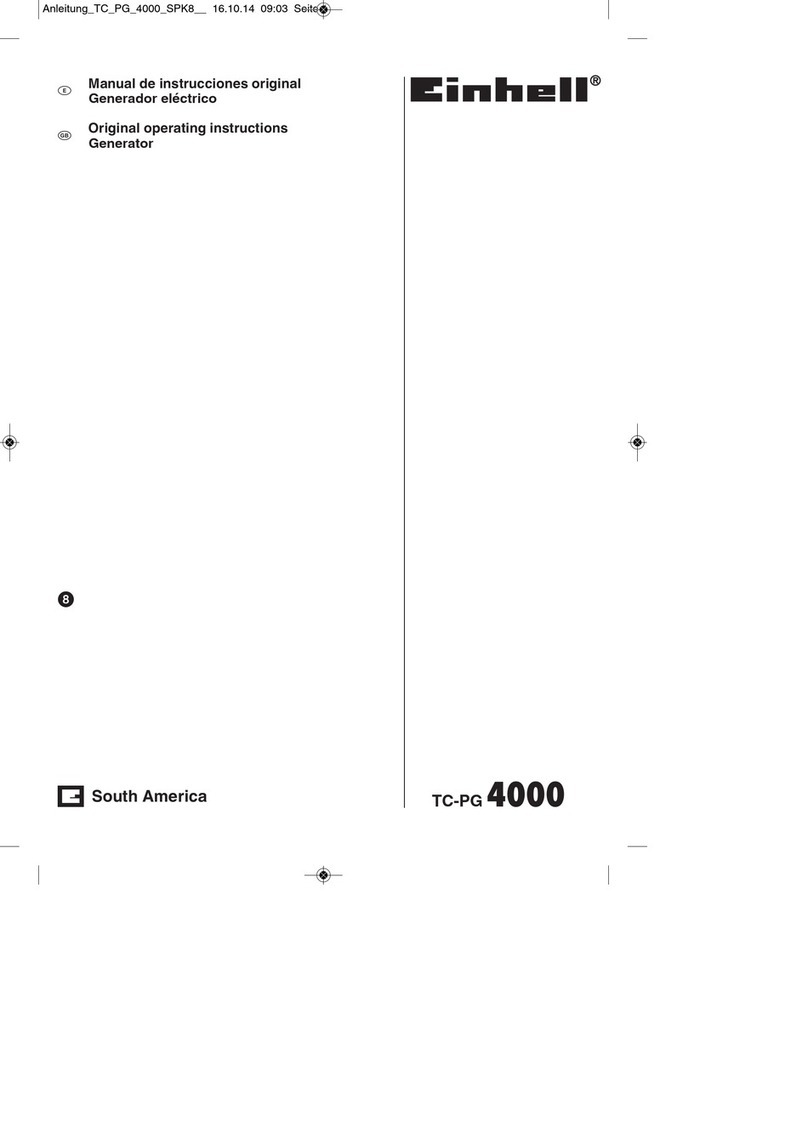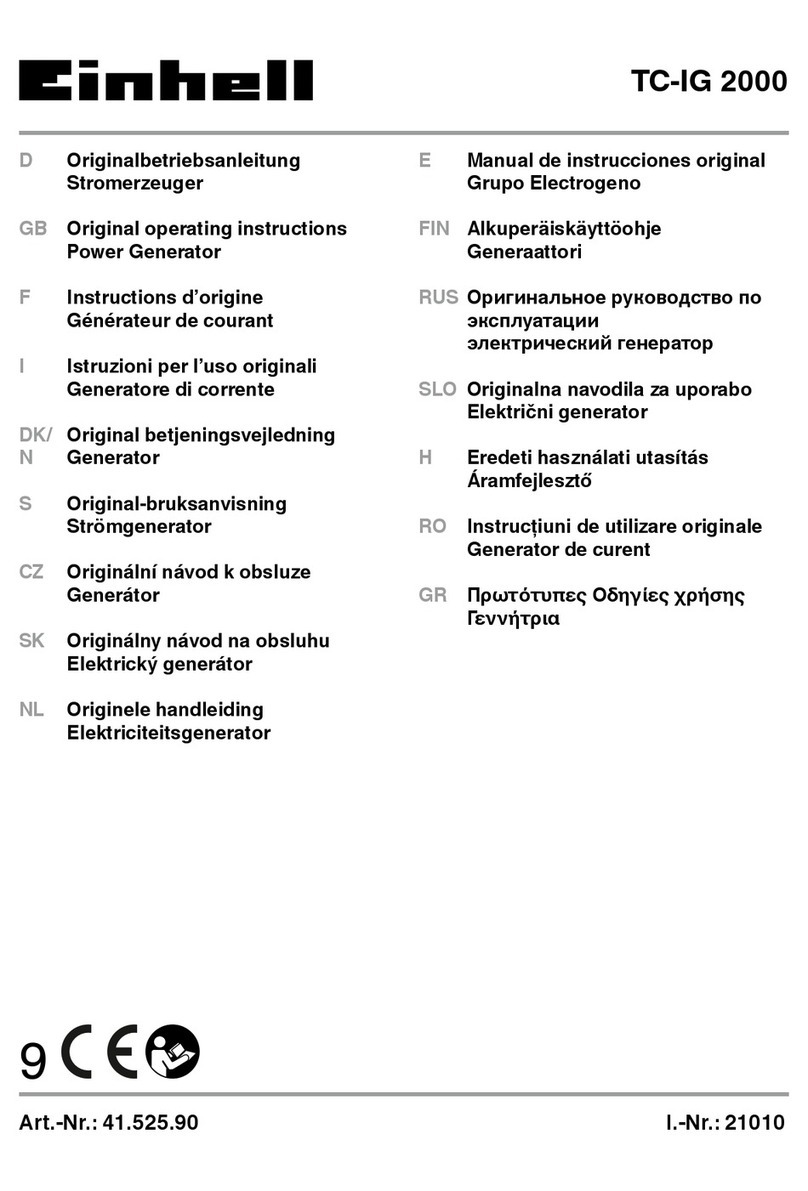D
6
Achtung!
Beim Benutzen von Geräten müssen einige
Sicherheitsvorkehrungen eingehalten werden, um
Verletzungen und Schäden zu verhindern. Lesen Sie
diese Bedienungsanleitung deshalb sorgfältig durch.
Bewahren Sie diese gut auf, damit Ihnen die
Informationen jederzeit zur Verfügung stehen. Falls
Sie das Gerät an andere Personen übergeben
sollten, händigen Sie diese Bedienungsanleitung
bitte mit aus. Wir übernehmen keine Haftung für
Unfälle oder Schäden, die durch Nichtbeachten
dieser Anleitung und den Sicherheitshinweisen
entstehen.
Erklärung der Hinweisschilder auf dem Gerät
(Bild 15)
1. Achtung! Bedienungsanleitung lesen.
2. Achtung! Heiße Teile. Abstand halten.
3. Achtung! Während des Tankens Motor
abstellen.
4. Achtung! Nicht in unbelüfteten Räumen
betreiben.
1. Sicherheitshinweise
Es dürfen keine Veränderungen am Stromer-
zeuger vorgenommen werden.
Es dürfen für Wartung und Zubehör nur
Originalteile verwendet werden.
Achtung: Vergiftungsgefahr, Abgase, Kraftstoffe
und Schmierstoffe sind giftig, Abgase dürfen
nicht eingeatmet werden.
Kinder sind vom Stromerzeuger fernzuhalten
Achtung: Verbrennungsgefahr, Abgasanlage und
Antriebsaggregat nicht berühren
Benutzen Sie einen geeigneten Gehörschutz,
wenn Sie sich in der Nähe des Gerätes befinden.
Achtung: Benzin und Benzindämpfe sind leicht
entzündlich bzw. explosiv.
Den Stromerzeuger nicht in unbelüfteten
Räumen oder in leicht entflammbarer Umgebung
betreiben. Wenn der Generator in gut belüfteten
Räumen betrieben werden soll, müssen die
Abgase über einen Abgasschlauch direkt ins
Freie geleitet werden. Achtung: Auch beim
Betrieb eines Abgasschlauches können giftige
Abgase entweichen. Wegen der Brandgefahr,
darf der Abgasschlauch niemals auf brennbare
Stoffe gerichtet werden.
Explosionsgefahr: Den Stromerzeuger niemals in
Räumen mit leicht entzündlichen Stoffen
betreiben.
Die voreingestellte Drehzahl des Herstellers darf
nicht verändert werden. Stromerzeuger oder
angeschlossene Geräte können beschädigt
werden.
Während des Transports ist der Stromerzeuger
gegen Verrutschen und Kippen zu sichern.
Den Generator mindestens 1m entfernt von
Wänden oder angeschlossenen Geräten
aufstellen.
Dem Stromerzeuger einen sicheren, ebenen
Platz geben. Drehen und Kippen oder Standort-
wechsel während des Betriebes ist verboten.
Beim Transport und Auftanken den Motor stets
abschalten.
Darauf achten, dass beim Auftanken kein
Kraftstoff auf den Motor oder Auspuff verschüttet
wird.
Stromerzeuger niemals bei Regen oder
Schneefall betreiben.
Den Stromerzeuger nie mit nassen Händen
anfassen
Schützen Sie sich vor elektrischen Gefahren.
Verwenden Sie im Freien nur dafür zugelassene
und entsprechend gekennzeichnete
Verlängerungskabel (H07RN..).
Bei Verwendung von Verlängerungsleitungen
darf deren Gesamtlänge für 1,5 mm250 m, für
2,5 mm2100 m nicht überschreiten.
An den Motor- und Generatoreinstellungen
dürfen keine Veränderungen vorgenommen
werden.
Reparatur- und Einstellarbeiten dürfen nur durch
autorisiertes Fachpersonal ausgeführt werden.
Nicht in der Nähe von offenem Licht, Feuer oder
Funkenflug betanken, bzw. den Tank entleeren.
Nicht rauchen!
Berühren Sie keine mechanisch bewegten oder
heißen Teile. Entfernen Sie keine Schutzabdek-
kungen.
Die Geräte dürfen keiner Feuchtigkeit oder Staub
ausgesetzt werden. Zulässige Umgebungs-
temperatur -10 bis +40°, Höhe: 1000 m über
NN, rel. Luftfeuchtigkeit: 90 % (nicht konden-
sierend)
Der Generator wird von einem Verbrennungs-
motor angetrieben, der im Bereich des Auspuffes
(auf der gegenüber liegenden Seite der Steck-
dose) und Auspuffaustritts Hitze erzeugt. Meiden
Sie die Nähe dieser Oberflächen wegen der
Gefahr von Hautverbrennungen.
Bei den technischen Daten unter Schallleistungs-
pegel (LWA) und Schalldruckpegel (LpA)
angegebene Werte stellen Emissionspegel dar
und sind nicht zwangsläufig sichere Arbeits-
pegel. Da es einen Zusammenhang zwischen
Emissions- und Immissionspegeln gibt, kann
dieser nicht zuverlässig zur Bestimmung
eventuell erforderlicher, zusätzlicher Vorsichts-

